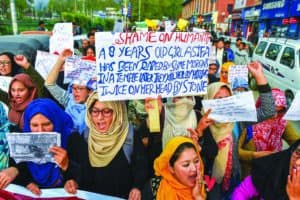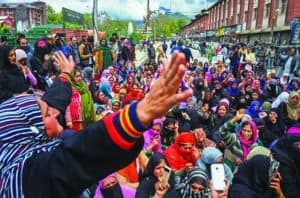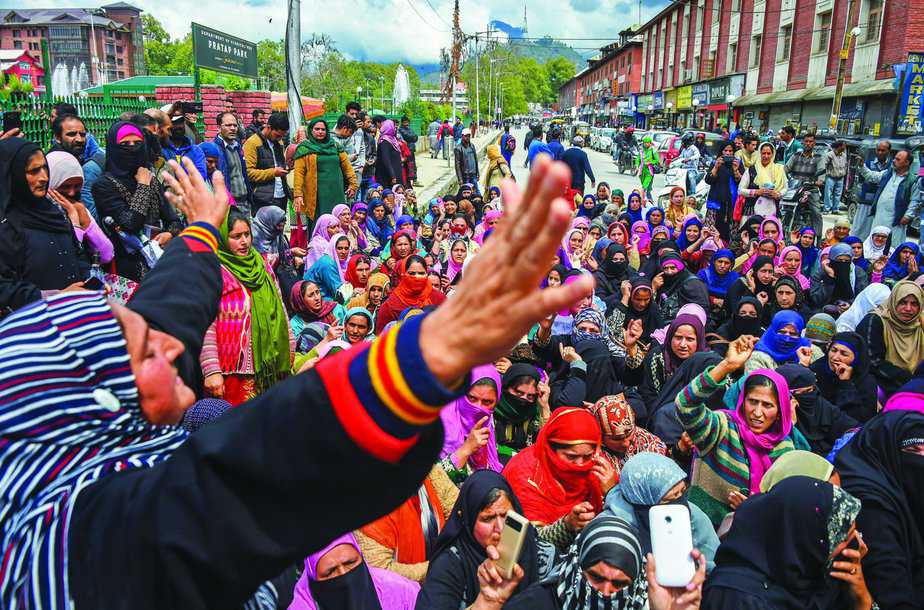When extraneous issues are raised and misinformation is circulated, injustice is done to the innocent victim of the crime, whose suffering is forgotten
There is a disturbing trend in the making that whenever a brutal rape takes place, somehow the caste, creed and profession of the family comes into focus. While the debate is dominated by the victim’s socio-economic background, the crime itself takes a backseat. Result: the real issue gets diluted. Is there a design or pattern behind focusing on such factors as caste discrimination and hate speech than the real crime?
Dalit, non-Dalit, Hindu lower caste, Muslim, nomadic tribe and Adivasi: these words come alive, distracting us from the core issue that a boy or girl has been killed with brutality.
Recent cases of rape have created simmering dissent. Some people were out on the streets with placards and candles while some are fighting it out on the internet and social media.

The mishandling and delayed action in the two recent rape cases have caused huge public discontent. There were protest marches in which people from all walks of life joined and in a unified voice everyone demanded justice. Celebrities, writers, academicians, rights activists, lawyers and other professionals and commoners have joined the protest march and raised the issue.
The two rapes have taken place in two states. One is in Uttar Pradesh (UP) and the other in Jammu and Kashmir. However, the outrage over the crime converged a uniform national outrage. Asifa, a minor, went missing in the month of January in Kathua district in Jammu region after her family of Muslim Bakarwal nomadic community moved to the area in winter. Her brutalised body was recovered near a Hindu temple. Investigators named Hindus as accused of raping and killing the girl.
According to the investigation, the abduction, rape and killing was planned to evict the Bakarwal community. The local lawyers of Jammu blocked the legal process initially, while the local BJP leaders — including two state ministers — joined protests in support of the accused.
The other incident involves a 16-year-old girl who was allegedly raped last year by a BJP MLA of Uttar Pradesh- Kuldeep Sengar. The girl failed to lodge a primary report with police since the MLA is from the ruling party. Frustrated with the inaction of the police, on April 8 the victim attempted to immolate herself near the UP Chief Minister Yogi Adityanath’s residence to protest the police inactivity. The following day, her father, allegedly beaten at the legislator’s behest, died in a government hospital. Police finally registered her case on April 12.
If we observe and look at similar incidents that happened in Haryana, Surat, Uttar Pradesh — the dilution was a pattern. A website has done a full story on the genuineness of the reasons given by Shakh Naad for a CBI investigation in the matter. Social media has a wide following and when such half-baked truths circulate, it creates confusion. It dissipates the consensus and leads to a divided public opinion with a bit of confusion thrown in. The question that arises: Is there a pattern or design behind creating such confusion?
Sample this: Kathua rape case involving a minor is such a gruesome act that the other aspects that have come into play should fade into the shadows. The Bakarwal community informed the Indian Army about the rape and is now at the receiving end. ‘Facts’ are being circulated to create an opinion for the feud between the communities. Muslims are spitting venom on Hindus and Hindus are actually saying the community was rightly served. Liberals are also trying to put their views in attempt to make people understand the real issue. And the free flow information is also creating fractured opinions. Every day through whatsapp, email, viber and other messaging apps, people get a confusing picture. A commoner wonders: What is the actual matter?

“Forty years ago, when I joined the services, there were two people on the scene when a crime was being committed. The complainant and the victim. Now there is caste, creed and many other aspects play a huge role, rather than the actual crime. And I would not hesitate to say that this dilutes the matter and shifts focus from the prime concern. The injustice that has been done gets divided into so many other debates, thinning the real issue.”
Since the matter come to light, interviews of the Bakarwals are circulating on the net. They are simple people. They demand justice and deny that they shouted any anti-national slogans. On the other hand, Hindu group Shakh Naad is circulating ‘reasons’ why the family of the accused eight are demanding a CBI probe. The central message being conveyed is that the incident has been wrongly portrayed and Hindu families are under stress, that other Hindus should come forward in support. That a free and fair probe is needed because all claims are false.
Shankh Naad on its Facebook page posted interviews with celebrities who have campaigned on internet demanding justice for Asifa. Whataboutery is being used. The post by Shankh Naad says “Dear Bollywood, Just next to Mumbai, a 4 years old was brutally murdered. She was stoned, her both hands were chopped from shoulders, her toes were cut and her body was thrown behind a mosque by one Abed Mohammad Shaikh.
“What?? Her death is not brutal like Kathua Case? Or the accused does not fit into your propaganda?? Or because the girl’s name is Payal and not Asifa or Ayesha??
So no Placards for her.”
Bhartiya Muslim Mahila Andolan (BMMA), the organisation that fights for the rights of Muslim women and filed the petition in the Supreme Court in the Triple Talaq matter, joined the fight for justice for Asifa. Speaking on the issue, Zakia Soman of BMMA said, “I was in Gujarat, interacting to a woman standing next to me, and asked curiously, what does she do? She said she is a housewife and she saw the posters calling for people to stand up for the 11-year-old. And she joined the protest because she has a daughter. So, it is a fight for every daughter. There is certainly a practice to give communal colour to crimes against women, I strongly feel. The practice is to make the women understand that she is inferior and can meet with such a fate if she tries to act differently.”
Airing similar views, Sharat Pradhan, renowned senior journalist who has covered Uttar Pradesh for the past three decades, says that there is a pattern behind it. “Caste is a huge issue in Uttar Pradesh. Rural UP very strictly follows the norms created by the upper caste. There is clear discrimination in the social fabric. Many a times, crimes are committed to make them understand that they cannot raise their voices. And if rape happen,s there is a deliberate attempt to project and play the caste card and put them back in their place,” he adds.





